Paul McCartney: 'I cried for a year when Linda died'
- Published
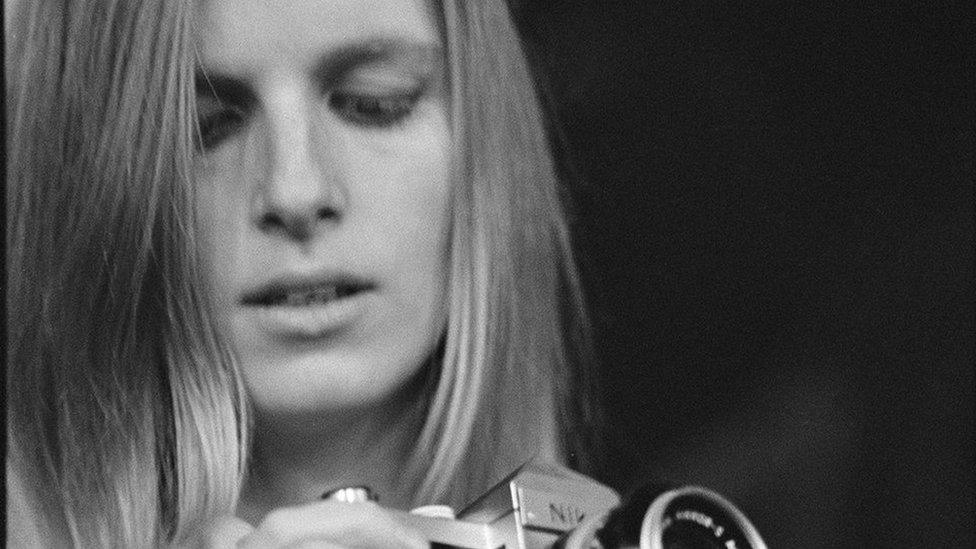
A photograph of Linda McCartney taken by Eric Clapton in 1967
Sir Paul McCartney bought his farm in Kintyre before he met Linda but it was her love of its "wildness and freedom" that created so many happy memories.
The former Beatle says the west of Scotland peninsula was one of their favourite places in the world and photographs from their time on High Park Farm form part of a new retrospective of Linda's work, being shown at Glasgow's Kelvingrove art gallery.
The pictures of rural Scottish life sit alongside photos of music legends such as Jimi Hendrix and Aretha Franklin which Linda took before the couple settled into their newfound home.
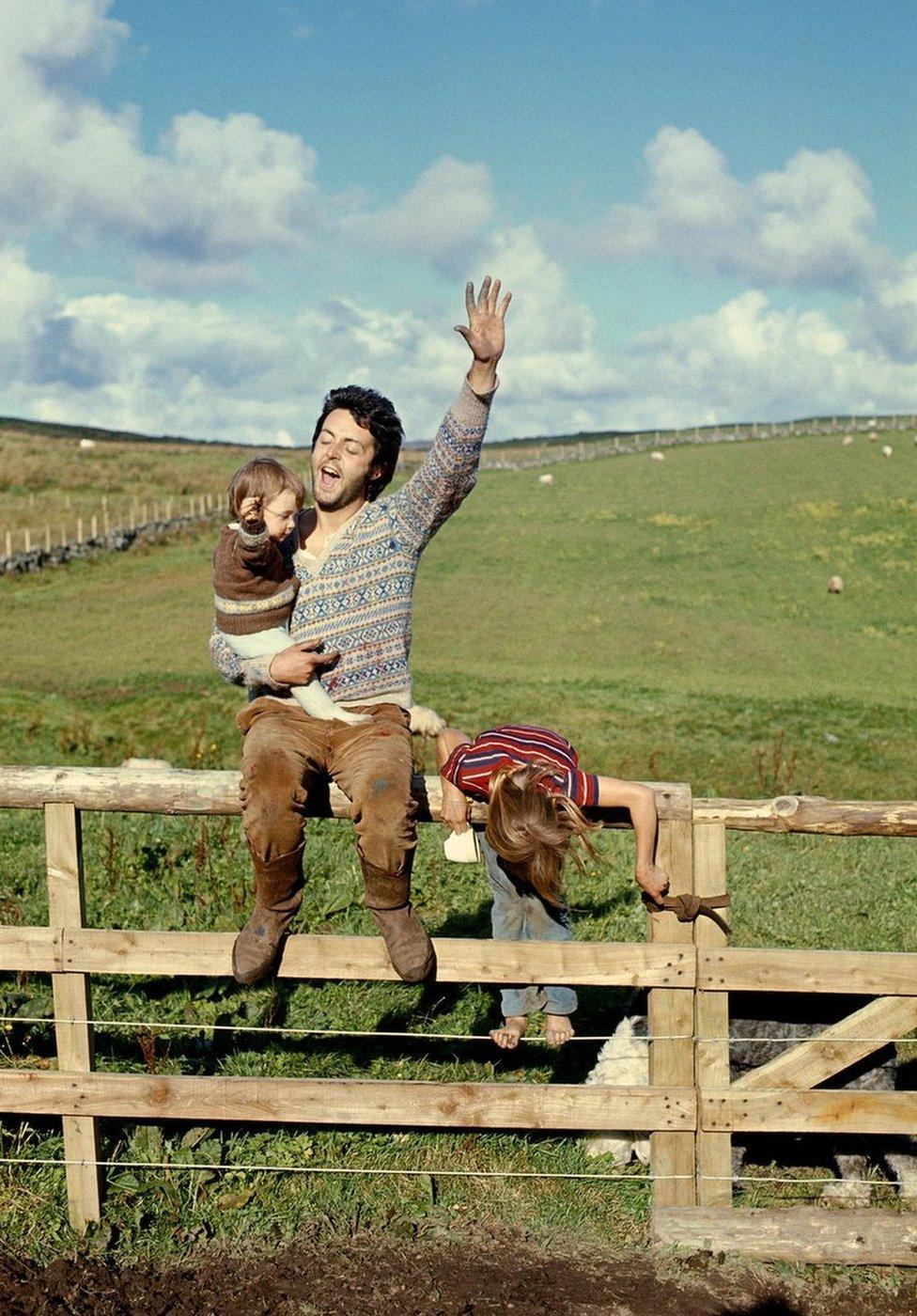
A 1970 snap of Mary, Paul and Heather in Scotland

Sir Paul, now 77, told BBC Radio Scotland's Ricky Ross Meets programme his late wife was a trailblazing photographer before the pair got together and raised a family.
In 1968 her portrait of Eric Clapton featured as the cover of Rolling Stone magazine and she was the first female photographer to do so.
But following her marriage to Sir Paul in 1969, her photographs became more intimate and emotional, exploring the natural world and family life.
Many of them were taken near the farm and its 200 acres of land close to Campbeltown, which Sir Paul bought at the height of Beatlemania in 1966, on the advice of financial advisors.
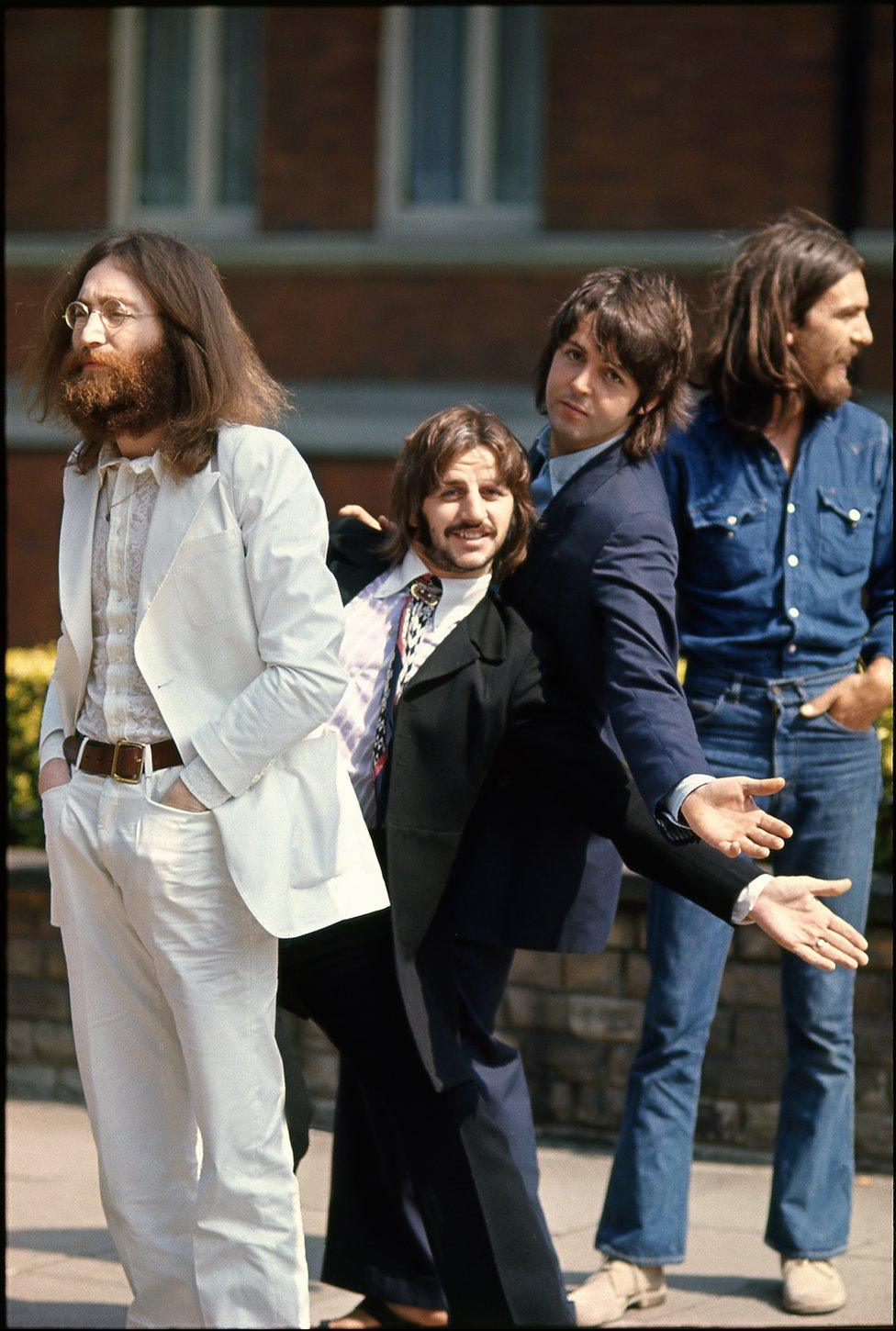
The Beatles at Abbey Road in 1969

He says he knew little about Scotland but fellow Beatle John Lennon had relatives there and would "talk about it in very fond terms".
"I think my attraction to it came through him talking about it originally," he says.
"When I met Linda and we were becoming a couple she said 'haven't you got a place up in Scotland?'."
"We went up and she totally fell in love with it. She loved the wildness and she loved horse riding and animals generally."

Aretha Franklin modelling for Mademoiselle

Linda, who was born in New York State in 1941, photographed the Manhattan music scene of the 1960s as well as later getting to know British bands such as The Rolling Stones and The Beatles.
Sir Paul says: "When she came over to Britain and we got married, life was more domestic."
In Kintyre she would photograph "old biddies and bonnie babies in prams", he says.
"She always put people at ease. She had a way of disarming you."
Sir Paul says the big attraction of getting away to Kintyre was "freedom", for them and later for their four children, who spent lots of time roaming about the countryside.
The joy of the "mist rolling in from the sea" would inspire his 1977 hit Mull of Kintyre, which sold two million copies.
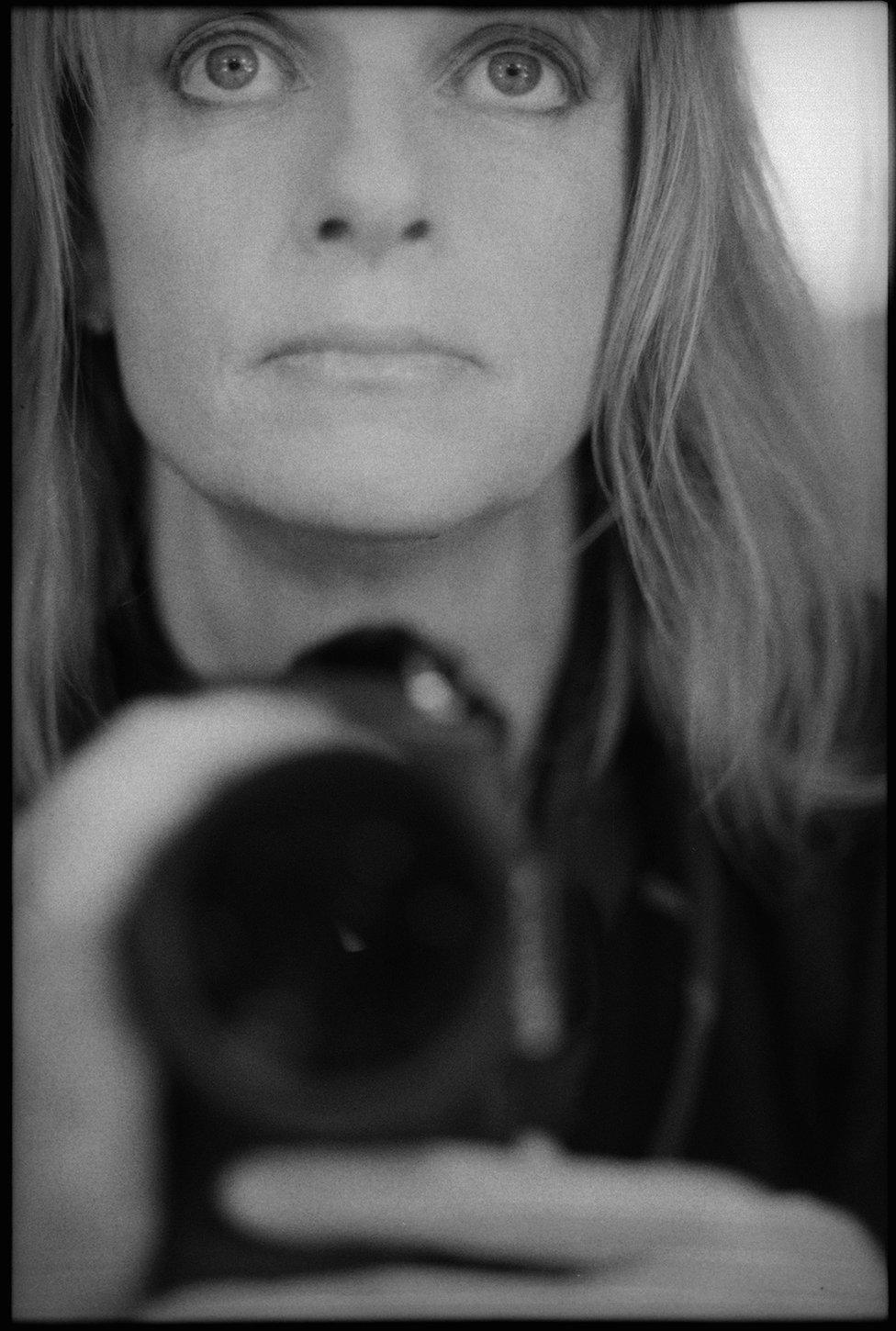
Linda McCartney's self portrait in Sussex, 1992

He says Linda's upbringing had been quite strict and she wanted to be able to indulge her passions such as a love of animals which would later lead her to be a pioneer of the vegetarian movement.
"When she came to Britain and we got to together the greatest thing about it was we both wanted to be free," Sir Paul says.
"We did what we wanted and she took pictures of it all."
The exhibition at Glasgow's Kelvingrove museum and art gallery runs from Friday until January next year.
It has been put together by Linda's daughter Mary McCartney, who is also a professional photographer, and Sarah Brown, who looks after her archive.
As well as photographs, the exhibition includes one of Linda's diaries from the 1960s and her cameras, photographic equipment and vintage magazines.
Sir Paul says Linda, who died of breast cancer 21 years ago, had exhibitions during her lifetime but would have loved the idea of a retrospective of all her work.
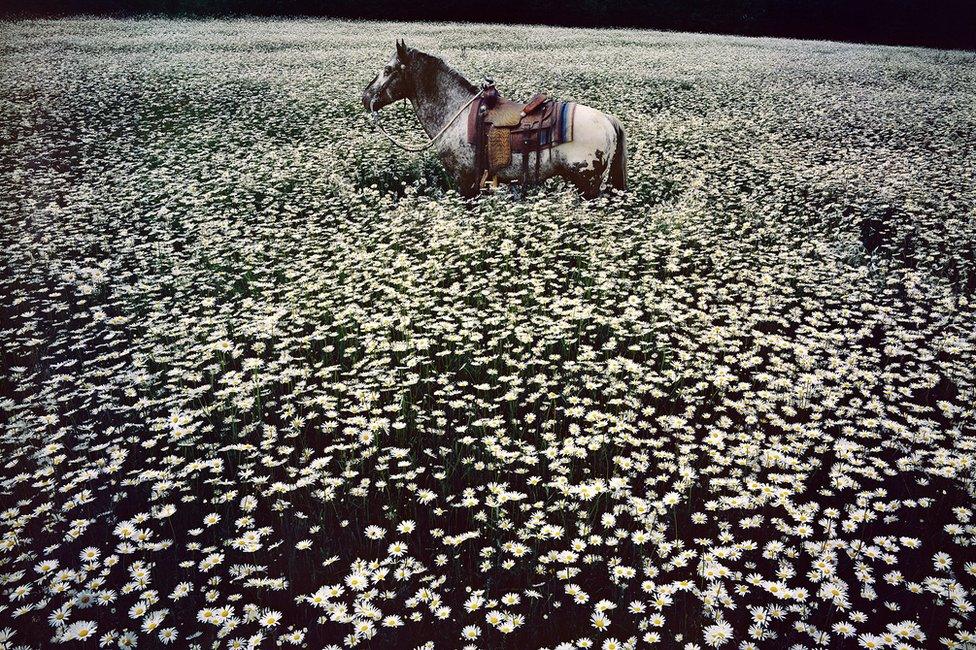
Lucky Spot in Daisy Field - Sussex, 1985
Linda was just 56 when she died in 1998.
Sir Paul's own mother Mary died at the age of 47, when he was just 14.
"Both my mum and Linda died of breast cancer," he says.
"We had no idea what my mum had died of because no-one talked about it. She just died.
"The worse thing about that was everyone was very stoic, everyone kept a stiff upper lip and then one evening you'd hear my dad crying in the next room.
"It was tragic because we'd never heard him cry. It was a quiet private kind of grief."
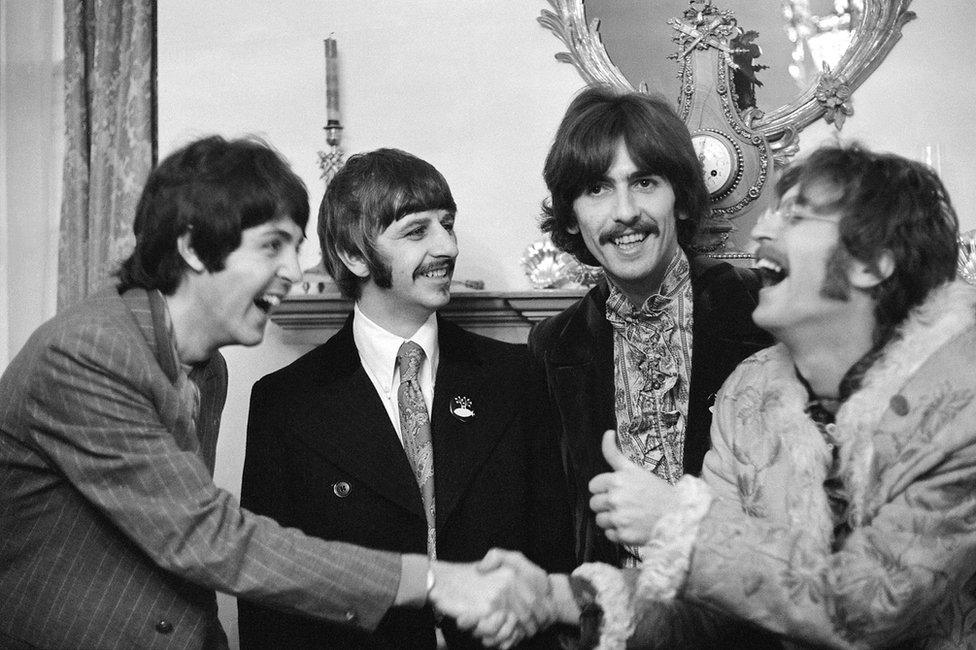
The Beatles at Brian Epstein’s home in Belgravia at the launch of Sgt Pepper’s in 1967
Sir Paul says his own grief for Linda was much more open.
"I think I cried for about a year on and off," he says.
"You expect to see them walk in, this person you love, because you are so used to them.
"I cried a lot. It was almost embarrassing except it seemed the only thing to do."
The Linda McCartney Retrospective opens at Kelvingrove Art Gallery and Museum in Glasgow on Friday and runs until 12 January 2020. Tickets cost £7 for adults.